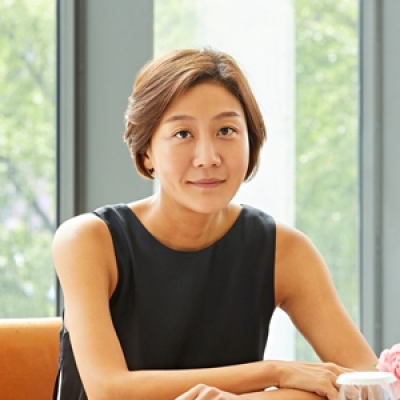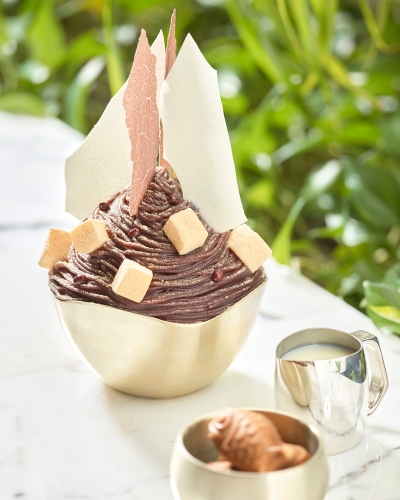8 Cool Things to Do in Seoul
With its bright lights and big city vibe, its graceful palaces and its fiery cuisine, Seoul is one of Asia’s most dynamic cities. Having played second fiddle to its larger, more famous cousins such as Tokyo and Beijing in years past, Seoul is now emerging as one of the region’s most exciting, innovative and creative powerhouses. Famous for being at the cutting edge of technology and for its pop culture, Seoul manages to retain pockets of history, peaceful temples, and nature right in the heart of the city. Visit now to discover what you’ve been missing.
1. Game of Thrones
Just steps away from Four Seasons Hotel Seoul lies Gyeongbokgung, perhaps Korea’s most impressive palace complex and previously the main residence of Korean royalty. Dating back to 1395, the palace has been subject to attacks, invasions and fires over the centuries, and lay in ruins for much of its history. But today it has risen once again and stands proud and fully restored, offering enough sights for at least a half day’s wanderings including two excellent museums – the National Palace Museum of Korea and the National Folk Museum of Korea. Don’t miss the colourful changing of the guard ceremonies that take place daily on the hour between 10:00 am and 4:00 pm at the main Gwanghwamum gate for a taste of the pomp and ceremony of days gone by.
2. It’s not just Gangnam Style
“Gangnam Style” exploded onto the global pop culture scene thanks to Psy and his ridiculously catchy song that had kids (and adults) dancing around the world, and even had UN Secretary General showing off his dance moves. But there’s much more to Seoul than dancing as if you’re riding a horse. While Seoul hasn’t always been known for the quality of its architecture, impressive new projects are springing up around the city such as the Zaha Hadid-designed Dongdaemun Design Plaza, a cultural hub featuring the architect’s signature curved lines and metallic surfaces. Museums and galleries abound north of the Han River, including the excellent Leeum Samsung Museum of Art, but for those wanting to experience that Gangnam style (named for the region that includes Seoul) first-hand, take a trip south of the river to where the fashion bloggers and celebrities hang out. Garosugil, the current darling of the fashion scene, is known for its one-off boutiques, cute cafes and restaurants, and great people watching. If it’s glamour that’s on the menu, head to Apgujeong and the Galleria department store for the world’s most famous brands and an exterior of hypnotic metal discs, or take a walk down Cheongdamdong and stop in at 10 Corso Como for great design, beautiful fashion and homewares, and a lovely book shop and café for when those tired feet need a rest.
3. Seasonal splendours
From the brilliant yellow blooms of the kaenari blossoms signaling the arrival of spring, to the lanterns that glow throughout the city during the May lotus lantern festival, each of Seoul’s distinctive four seasons brings its own delights. Once the July rains have passed, the hot sunny days of summer play host to outdoor festivals, followed by cool breezes as autumn makes an appearance, turning the city’s gingko leaves to gold and maple leaves to red. The cold winter days are perfect for a traditional Korean steam bath, or perhaps a day trip to one of the many ski resorts that can be easily accessed from Seoul, such as Bears Town Ski Resort or Star Hill Resort.
4. A river runs through it
Seoul’s city planners did a great job of bringing new life to a river, the Cheonggyecheon stream, previously hidden under an elevated highway, creating a new space for Seoulites to enjoy the open air in the process. Today the stream’s waters tumble freely down small weirs and waterfalls to the Han river, offering a wonderful respite from the non-stop energy of the city above. Spot couples strolling hand-in-hand and families playing, and don’t miss the many different public artworks that dot the course of the stream. Look for the landmark huge conical blue and pink Spring Tower and start your walk from there. In November the stream is decorated with spectacular lanterns that are lit at night, drawing people from far and wide to see the incredible spectacle. Wrap up warm, take a camera, and get snapping.
5. To market, to market
Whether you’re looking for street food, traditional metal chopsticks, sports shoes, fresh fish or the latest Korean fashions, Seoul’s markets are the place to head for the best bargains. The one-stop-shop for practically everything is Namdaemun market, located close to one of the city’s main sights, the South Gate (“Nam” meaning South, “dae” meaning big, “mun” meaning gate), which has now been fully restored to all of its colourful glory after it was set fire in 2008. If crustaceans are on the list, Noryangjin fish market delivers up all of the treasures of the deep. For a local pick-me-up to restore the health and spirits, Yangnyeongsi herbal medicine market is the place, and to rummage through antiques and bric-a-brac head to Dapsimni antiques market. But if it’s the latest fashions that are on the shopping list, it has to be Dongdaemun. An enormous wholesale market, clothing is the order of the day here. Don’t miss Doota as well – a multi-story shopping mall that’s open for your shopping pleasure until 5:00 am on weekends.
6. Hanok hunting
In and among Seoul’s gleaming skyscrapers are pockets of traditional hanok, wooden houses with elegantly curved tiled roofs and beautiful traditional design details. The hanok that remain today are mostly clustered around Bukchon (meaning North Village) in a maze of narrow streets. The charming Samcheongdong area is home to hundreds of hanok, some of which are open to the public, and some housing teahouses, boutiques, restaurants and galleries. Perfect for a stroll on a sunny afternoon.
7. The Other Side
For anyone with even a passing interest in history and world affairs, a trip to the DMZ (Demilitarized Zone) between North and South Korea is a must. Just 55 kilometres (34 miles) north of Seoul, this is the end of the line – there’s no way into the North from here, and there’s no way into the South from the other side. Running along the demarcation line crossing from the Korean peninsula coast to coast, the DMZ and the JSA (Joint Security Area, otherwise known as Panmumjeom, jointly administered by the US and South Korea) offer a glimpse into the so-called Hermit Kingdom. A trip here is an education, and is a reminder of the families that were separated at the end of the war, and who still remain separated today. It’s a sobering and thought-provoking experience.
8. Learning your galbi from your chige from your bibimbap
Koreans are proud of their food, and rightly so. Barbecue is the mainstay of Korean cuisine and its popularity has spread around the world, but there’s much more to Korean food than galbi (beef ribs) and samgyeopsal (sliced pork belly), although a trip to Seoul wouldn’t be complete without trying both. A visit to the simplest local restaurant will result in the table being covered with an array of small dishes ranging from the much-loved kimchi (fermented cabbage) to dried fish, tofu, spicy beansprouts, and much more. Bibimbap (a mix of rice, vegetables, minced beef, egg and red chilli paste served in a hot stone pot) is as much fun to eat as it is to pronounce, and on a cold winter’s day there’s nothing better than a hot kimchi chige (stew) or samgyetang (chicken soup with ginseng, red dates and sticky rice). Not to forget the wide variety of seafood, sometimes eaten cooked, sometimes raw, and perhaps the country’s best-loved noodle dish, naengmyeon (cold, chewy buckwheat noodles in a slightly sweet vinegary soup), which is the perfect dish for a steamy summer’s day. Wash it all down with a glass of the potent local spirit soju, or stick to a light local green tea. And don’t forget to learn how to say “it’s delicious” in Korean – mashisseoyo!

Seoul, 100-210
Korea

Seoul, 100-210
Korea



 @FourSeasonsPR
@FourSeasonsPR